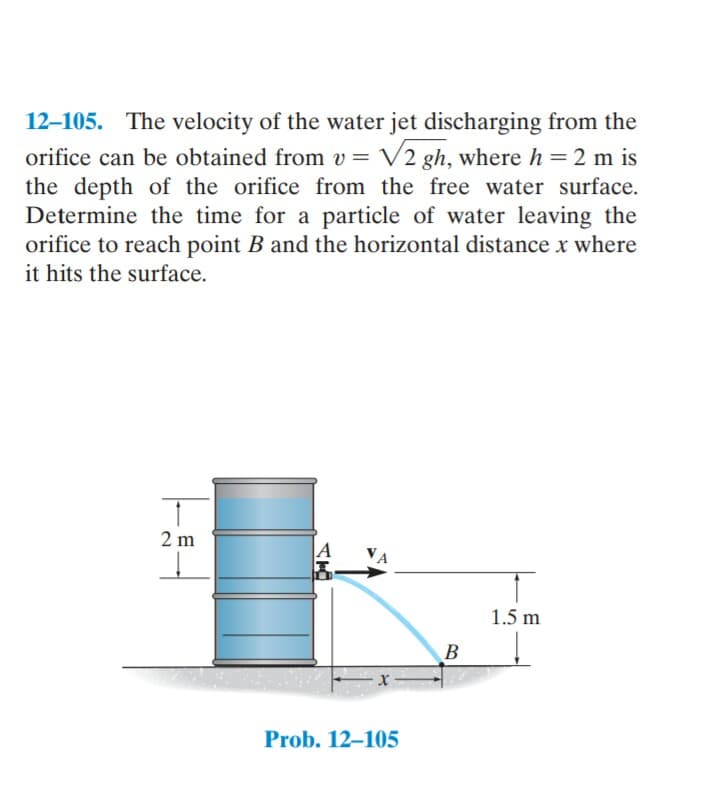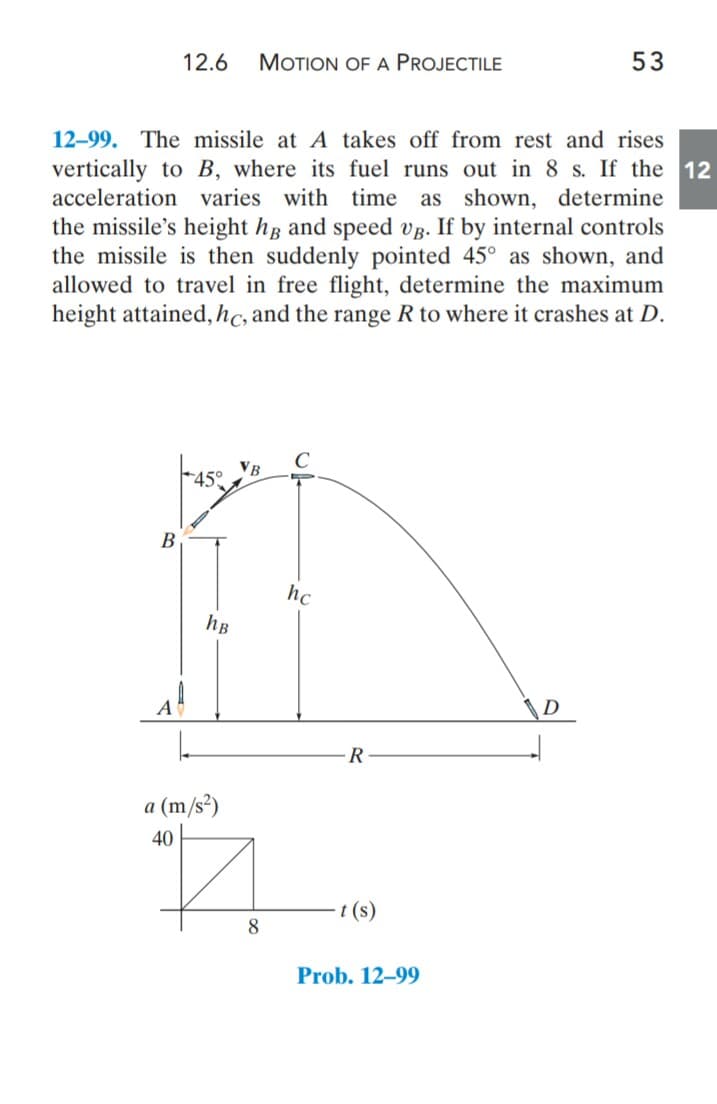12–105. The velocity of the water jet discharging from the orifice can be obtained from v = V2 gh, where h =2 m is the depth of the orifice from the free water surface. Determine the time for a particle of water leaving the orifice to reach point B and the horizontal distance x where it hits the surface.
12–105. The velocity of the water jet discharging from the orifice can be obtained from v = V2 gh, where h =2 m is the depth of the orifice from the free water surface. Determine the time for a particle of water leaving the orifice to reach point B and the horizontal distance x where it hits the surface.
Elements Of Electromagnetics
7th Edition
ISBN:9780190698614
Author:Sadiku, Matthew N. O.
Publisher:Sadiku, Matthew N. O.
ChapterMA: Math Assessment
Section: Chapter Questions
Problem 1.1MA
Related questions
Question
Please send the solution of these questions

Transcribed Image Text:12–105. The velocity of the water jet discharging from the
orifice can be obtained from v = V2 gh, where h = 2 m is
the depth of the orifice from the free water surface.
Determine the time for a particle of water leaving the
orifice to reach point B and the horizontal distance x where
it hits the surface.
2 m
1.5 m
В
Prob. 12–105

Transcribed Image Text:12.6
MOTION OF A PROJECTILE
53
12-99. The missile at A takes off from rest and rises
vertically to B, where its fuel runs out in 8 s. If the 12
acceleration varies with time
the missile's height hg and speed vg. If by internal controls
the missile is then suddenly pointed 45° as shown, and
allowed to travel in free flight, determine the maximum
height attained, hc, and the range R to where it crashes at D.
as shown, determine
C
*45°
В
hc
hB
D
R
a (m/s²)
40
t (s)
8
Prob. 12–99
Expert Solution
This question has been solved!
Explore an expertly crafted, step-by-step solution for a thorough understanding of key concepts.
This is a popular solution!
Trending now
This is a popular solution!
Step by step
Solved in 4 steps with 4 images

Knowledge Booster
Learn more about
Need a deep-dive on the concept behind this application? Look no further. Learn more about this topic, mechanical-engineering and related others by exploring similar questions and additional content below.Recommended textbooks for you

Elements Of Electromagnetics
Mechanical Engineering
ISBN:
9780190698614
Author:
Sadiku, Matthew N. O.
Publisher:
Oxford University Press

Mechanics of Materials (10th Edition)
Mechanical Engineering
ISBN:
9780134319650
Author:
Russell C. Hibbeler
Publisher:
PEARSON

Thermodynamics: An Engineering Approach
Mechanical Engineering
ISBN:
9781259822674
Author:
Yunus A. Cengel Dr., Michael A. Boles
Publisher:
McGraw-Hill Education

Elements Of Electromagnetics
Mechanical Engineering
ISBN:
9780190698614
Author:
Sadiku, Matthew N. O.
Publisher:
Oxford University Press

Mechanics of Materials (10th Edition)
Mechanical Engineering
ISBN:
9780134319650
Author:
Russell C. Hibbeler
Publisher:
PEARSON

Thermodynamics: An Engineering Approach
Mechanical Engineering
ISBN:
9781259822674
Author:
Yunus A. Cengel Dr., Michael A. Boles
Publisher:
McGraw-Hill Education

Control Systems Engineering
Mechanical Engineering
ISBN:
9781118170519
Author:
Norman S. Nise
Publisher:
WILEY

Mechanics of Materials (MindTap Course List)
Mechanical Engineering
ISBN:
9781337093347
Author:
Barry J. Goodno, James M. Gere
Publisher:
Cengage Learning

Engineering Mechanics: Statics
Mechanical Engineering
ISBN:
9781118807330
Author:
James L. Meriam, L. G. Kraige, J. N. Bolton
Publisher:
WILEY